How to dig a well recommendations from personal experience
How to dig a well? What technologies, and what materials to use? What types of wells are relevant for construction at their summer cottage? These and other questions, sooner or later, are the summer residents and the owners of country houses located far from the centralized water supply.
To begin with, we will decide what types of wells we can build with our own hands.
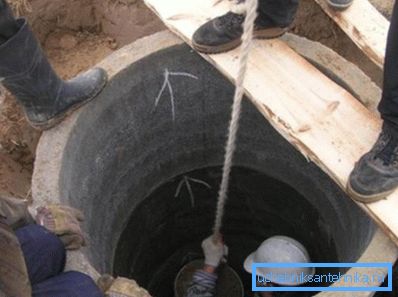
What and how will we build

The choice of the autonomous water supply system depends on many factors, including:
- type of soil on the site;
- the depth of the aquifer;
- availability of access roads to the site;
- budget allocated for the project;
- project timeline;
- availability of building materials;
- the possibility of using special equipment.
Taking into account the features of the dacha plots and the possibilities of beginning construction workers, the best solution is a well of a mine type. First of all, this structure is easy to build. Despite the complexity of the work, beginners will be able to master the peculiarities of the technology.
Important: Before you find where to dig a well and get to work, you need to agree with two or three assistants. Some stages of earthworks will require substantial physical effort.
Getting Started

At the initial stage, you need to decide how to determine where to dig the well. There are many more or less effective ways to determine the right place for earthworks.
Consider the most relevant of them:
- It takes about a pound of silica gel. It is a desiccant, which is a small translucent granules. We dry the granules thoroughly in the sun or in the oven, and then fall asleep in clay unglazed dishes.
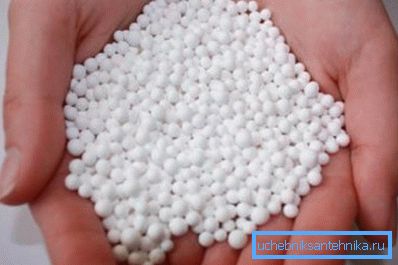
We weigh the container with a desiccant on an accurate scale and wrap it in a dense fabric. Next, the dishes are buried about half a meter deep in the place where it is supposed to dig a well.
A day later, the dishes are dug and reweighed. The weight of the desiccant will be greater than at the first weighing. The greater the difference, the greater the chance that there is water in the area.
- If at the end of a hot summer day to carefully follow the land, you can notice a small evaporation.
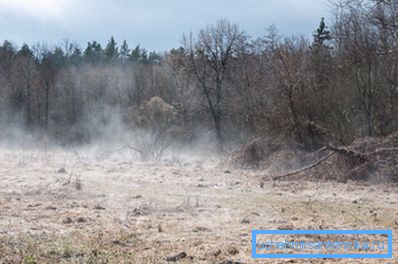
If you notice this phenomenon, feel free to dig in that place, most likely there is water and it is shallow.
- If you are faced with the question of how to find out where to dig a well, pay attention to the terrain.. The fact is that waterproof layers copy the terrain. Consequently, in the area with depressions and depressions surrounded by elevations, water will be abundant and close to the surface.
- About the proximity of the location of the water say moisture-loving plants.
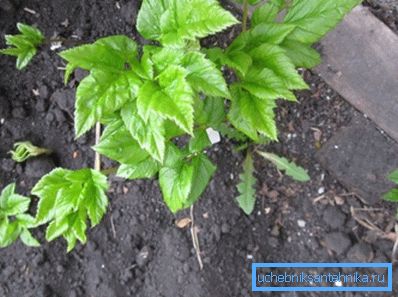
For example, if the area grows snyt, sedge, coltsfoot, as well as trees such as spruce, birch, alder, the probability of success during the laying of the well greatly increases. However, despite the guaranteed availability of water on the site, it can be located deep.
- Determination of the place by the behavior of domestic animals is a strange, but sometimes effective method.. The essence of the method in the following, watch a certain time for pets, if there are any at the dacha. For example, if a dog for rest constantly uses the same place, dig there. There is a high probability that you will stumble upon a shallow aquifer. Well, a dog, as compensation, it will be possible to build a booth.
- The most reliable and proven method is exploration drilling.. To find water in this way will require a garden auger.
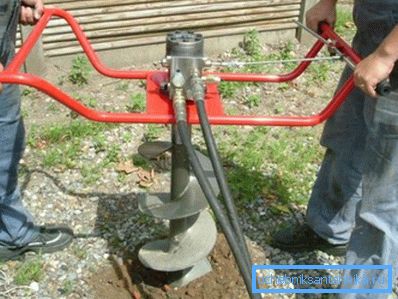
The land plot should be divided into squares and checked at intervals of 10 meters from the place of the previous test drilling.
Special attention should be paid to the lowlands. Having drilled a test well to a depth of 5-10 meters, feel the ground at the end of the drill. If the water is close, the soil at the end will be viscous, sticky, and sometimes wet. If such a site is found, you can proceed to the laying of the well.
Tip: If there is water on the site, but it is deep, it is advisable to consider the prospect of drilling a water well as an alternative to digging a well. The service life of these water intake systems is about the same, while at the same time it is easier to drill a well to a greater depth than to dig a full-sized mine.
Make sure that at a distance of 50 meters from the site of the alleged source of water, there are no landfills, compost pits, baths, septic tanks, drain pits, livestock farms and other facilities that could cause pollution of the groundwater.
What you need to know, starting the laying of the well
First of all - it's safety! The fact is that the construction of a water intake shaft carries certain risks. For example, it may seem strange, but in the process of digging you can stumble not on water, but on gas.
Imagine, at a depth of several meters, the probability of opening a gas “pocket” is quite real. The danger is that gas can cause poisoning, so if you smell a strange smell, try to quickly leave the well.
No less dangerous is the fall of the load in the mine, in which at this time there are workers. The threat is quite real, as the concrete rings used for the arrangement of the trunk, weigh up to half a ton. In addition, during the sampling of land with a bucket, try, being in the mine, as closely as possible to pull over its walls.
Important: Do not neglect wearing a construction helmet.
And another question, what time of year is it better to dig a well? There are several opinions about this, but experts believe that the best period for laying a well is a dry summer. If at this time you get to the water, be sure that with the change of season it will not disappear.
Construction cost
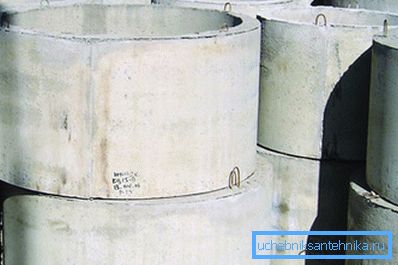
Instruction of the construction of the well depends largely on the type of building material from which the shaft will be erected.
Brick, stone, wood and reinforced concrete rings of industrial manufacture can be used as building materials. It is easier and faster to use concrete round billets equipped with special connecting brackets for laying the barrel of a water intake shaft.
So, after we have decided on the choice of building material, we will roughly calculate how much the construction will cost us.
Given that the standard well has a depth of 8 meters with a mine diameter of 1 meter, the costs will be as follows:
- Reinforced concrete rings for a well intake shaft in the amount of 8 pcs. multiply by $ 70 and get $ 560;
- The elements necessary for the construction of the tip and the canopy will cost at least $ 100.
Total, only for building materials, not counting the time and labor costs, we need about $ 700. Of course, the price of the project will be over a thousand, if the construction work will be carried out not by own hands, but by the invited specialists.
Technology of excavation
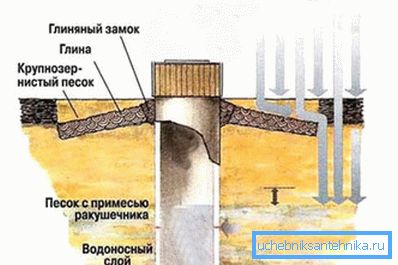
- We order building materials and deliver them to the site.
- We mark on the ground a circle in the shape of the future mine.
- We begin to dig and put the selected soil in the car. From the outset, we timely remove the soil without leaving it for later, as the pile of land on the construction site will interfere.
- After deepening the pit per meter, you can proceed to the installation of the ring.
- The ring is rolled up to the pit in three, otherwise it will be difficult to cope with such a task.
- We try to roll up the ring so that it hangs over the pit by one third.
- Then we tilt the ring so that it fell into a hole and took a more or less perpendicular position relative to the horizon.
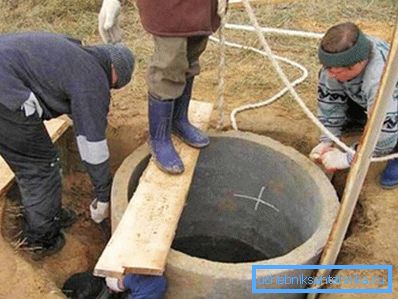
Of course, there will be some bias, but this is not difficult to fix.
- To center the ring, we dig up the ground on the side where the reinforced concrete structure is higher.
- After the first ring is leveled, we check its evenness with a water level. If everything is in order, roll the next ring and set it to the first one. In this case, everything should stand up smoothly, since the concrete lies on the concrete.
- Then again dig a hole downwards, evenly choosing the ground from under the first ring.
Tip: Given the limited space in the shaft, it is not recommended to use a regular shovel and it is better to use a shovel with a short handle.
- Further, the process of digging a well does not imply anything new, the ground is still digging in and is selected by a bucket. New rings are placed on top.
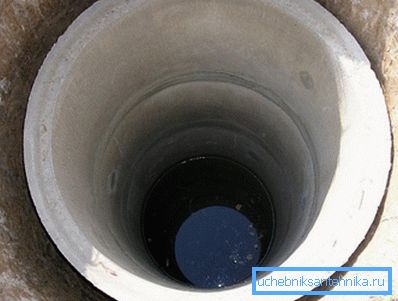
Important: After installing the fourth ring, it will be stuffy in the mine and as it deepens, there will be less and less fresh air.
- A domestic fan can be a way out of this difficult situation. The fan must be fixed on the cable and lowered into the shaft so that it blows air from there. It would seem that such a simple solution can make the excavation work more comfortable.
Important: Before starting the laying of the water intake, you need to take care of how the worker, busy with digging the pit, gets out of it. The best solution would be a rope ladder. If there is no such accessory in everyday life, one long ladder can be assembled from several short ones.
When will water appear
Regardless of where the excavation works are carried out: in ordinary soil or in clay, water appears at a depth of 7-8 meters.
This happens as follows:
- as you move to this depth, the air becomes wet and cool;
- then the soil under your feet will begin to stick, and then squish.
Despite the proximity of water, do not stop work until the last ring is installed.
It would seem that you can get out, but do not rush, because you need to make a bottom filter.
Pre-harvested pebbles in the amount of two or three bags are lowered into the mine and evenly distributed along the bottom. Spilling pebbles, we try not to trample it into the ground. The height of the backfill filter should be 20-50 cm.
At the final stage, the joints between the rings should be sealed with a cement-sand mortar. While the water in the mine is accumulated, the seams will have time to completely dry.
Conclusion
Now, you have got a general idea of how to dig a well. By following the technological guidelines and recommendations suggested in this text, you will be able to achieve the desired result. In order to cope with the task was easier, watch the video in this article.